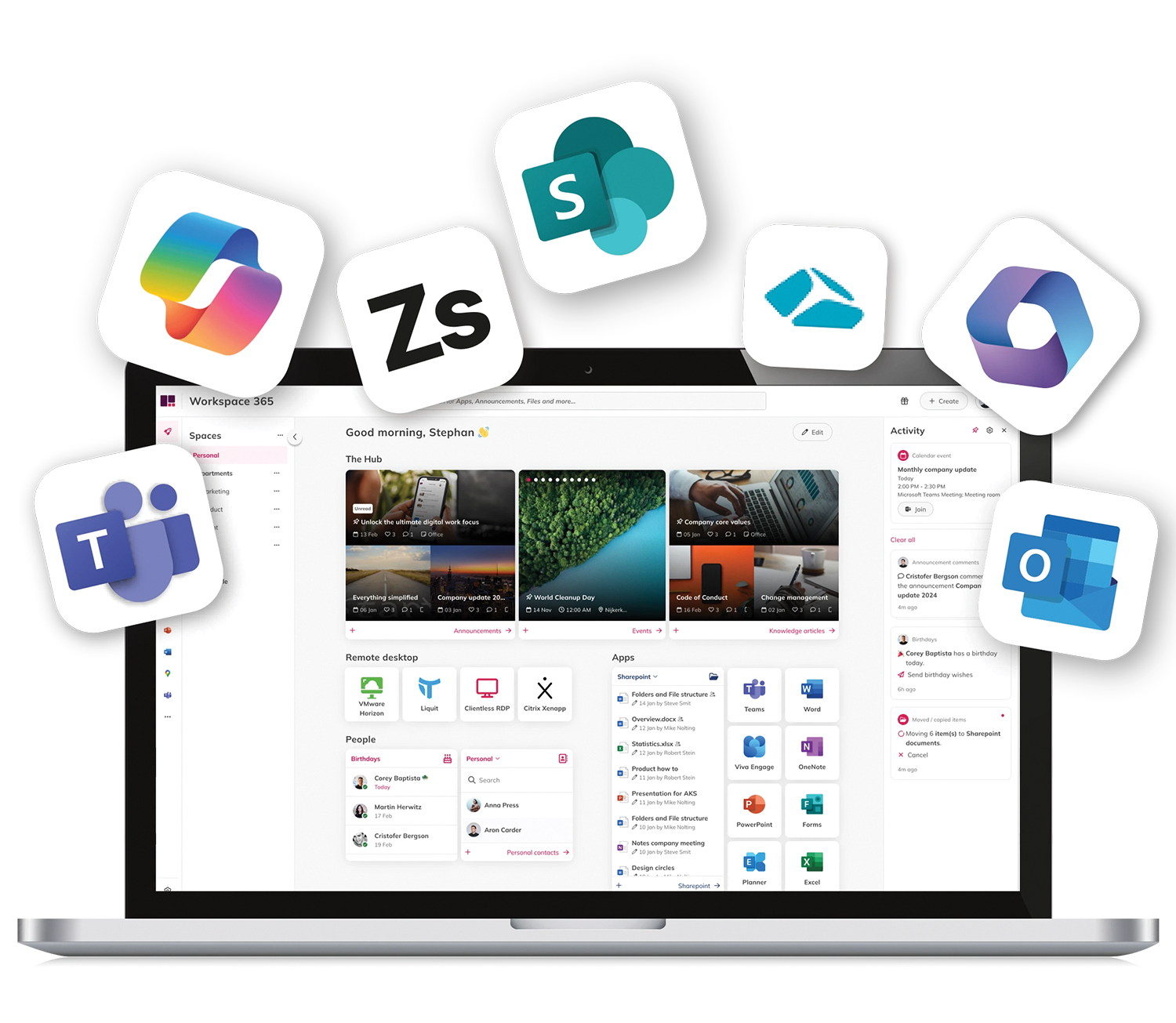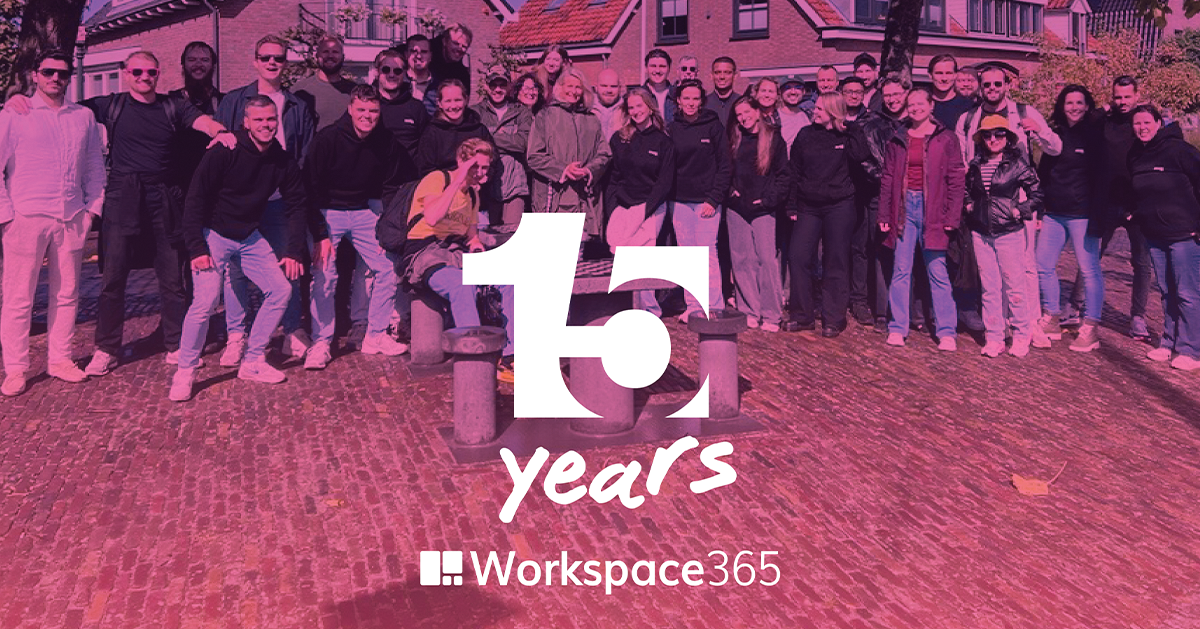With Business Process Management (BPM) you work more efficiently by standardising and optimising the processes in your organisation. Among other things, you prevent human errors, expose time wastage and motivate your employees. Based on a five-step approach and with its own set of BPM tools, Workspace 365 supports you in optimising your business processes.
What are business processes?
What does your company do for its customers? Business processes revolve around the actions needed for your organisation to fulfil its function. Every business process includes both the actions that people perform and that which is added by supporting systems to achieve a result. All processes combined are (if all goes well) aimed at implementing your business strategy. The more efficient your processes are, the better your margins and the happier your customers will be.
Study, design and model
BPM is about studying, designing and modelling your business processes. You scrutinise the how each process is executed, monitor its course and discover optimisation opportunities. By organising your processes well, you ensure that the resources you have are used more efficiently to achieve your business goals. This results in cost savings, increases productivity and makes work more fun.
How to start with BPM
Reason enough to get involved in BPM. But how do you start? You have plenty of methodologies to choose from. Six Sigma and Lean are two well-known approaches. What you don’t have is one application that fully supports you in BPM. There are plenty of tools that help you execute different aspects of BPM, but the overall approach is people work. Workspace 365 can help you with that.
5 steps in Business Process Management
We base our approach on the 5 steps that make up the BPM life cycle in Business Process Management.
- Design
- Modelling
- Implementation
- Monitoring
- Optimisation
Step 1: Design
What objectives does your organisation have, and how do your people ensure that these objectives are achieved? In the design phase, the business processes are mapped out. From discussions with stakeholders and management, a clear picture emerges of how the organisation works.
Step 2: Modelling
Based on the findings in step 1, you look at where adjustments in the current business processes can lead to a better way of working. If adaptation is not enough, then in this step new processes can be devised to supplement or replace existing business processes.
Step 3: Implementation
In BPM, you do not revamp the entire organisation at once. Before you roll out a new process, you first test it with a small group of employees to see if it works as expected. Once the teething problems have been solved and everything runs smoothly, you roll it out throughout the entire organisation.
Step 4: Monitoring
Key Performance Indicators (KPIs) are an important part of BPM. These are measured values that is determined in advance to reveal whether your optimisations have the desired result. By presenting the KPIs side-by-side in a dashboard, you maintain an overview of the entire renewal process to see what works and where adjustment is required.
Step 5: Optimisation
One round of BPM is not enough. It is a cyclical process. Based on the KPIs in step 4, you can determine where the next optimisation is possible. As a final step, you gather new leads for the next optimisation round. Then you go back to step 1.
Nice theory, but what can you do with BPM in practice?
Business Process Management is a great tool to digitally transform your organisation. You can use technology in a very targeted way to get more done. Thanks to BPM, you can achieve this not just on a hunch, but supported by KPI’s.
Working in a more flexible way
The main benefit you get is more flexibility. By streamlining your business processes, you can shift much faster if market conditions change. If major changes are necessary, then you already have all the tools in house to map out what you need to change. You know how to test and can measure the results.
Improved margins
BPM has a positive impact on your margins. By dealing with delays, errors and bottlenecks, you can achieve more with the same resources. Whether you produce more effectively or serve your customers faster, this has a positive effect on your turnover without having to deploy additional resources.
Happier employees
No less important is the beneficial effect on your own people. The first thing that Business Process Management tackles are the boring, repetitive tasks that can easily be performed by a computer. Employees can focus on the challenging part of their work and receive targeted support. This leads to fewer mistakes due to routine, more productivity and higher employee satisfaction.
Safe and compliant
BPM also has a positive impact on your security and compliance with legal obligations.
By registering exactly which consignment notes, indemnities and other documents are added to the process and when, you ensure that you always comply with requirements. You record who works with documents and when. This provides a foundation for improving your digital security. By keeping a close eye on the processes, any shortcomings in compliance are quickly revealed and can be resolved.
Get started with BPM
The digital workspace provides an ideal platform for business process management. Workspace 365 enables you to bring your processes together in one simple interface. You can also combine tasks from different systems to streamline your processes. And you can convey the information you need to perform your tasks to the workspace. So, you can have everything in one place.
By considering BPM, you are already taking the first step towards working more efficiently. The second step is just as simple: talk to experts. Workspace 365 will help you think about how you can optimise and manage processes within your organisation using a digital workspace.







